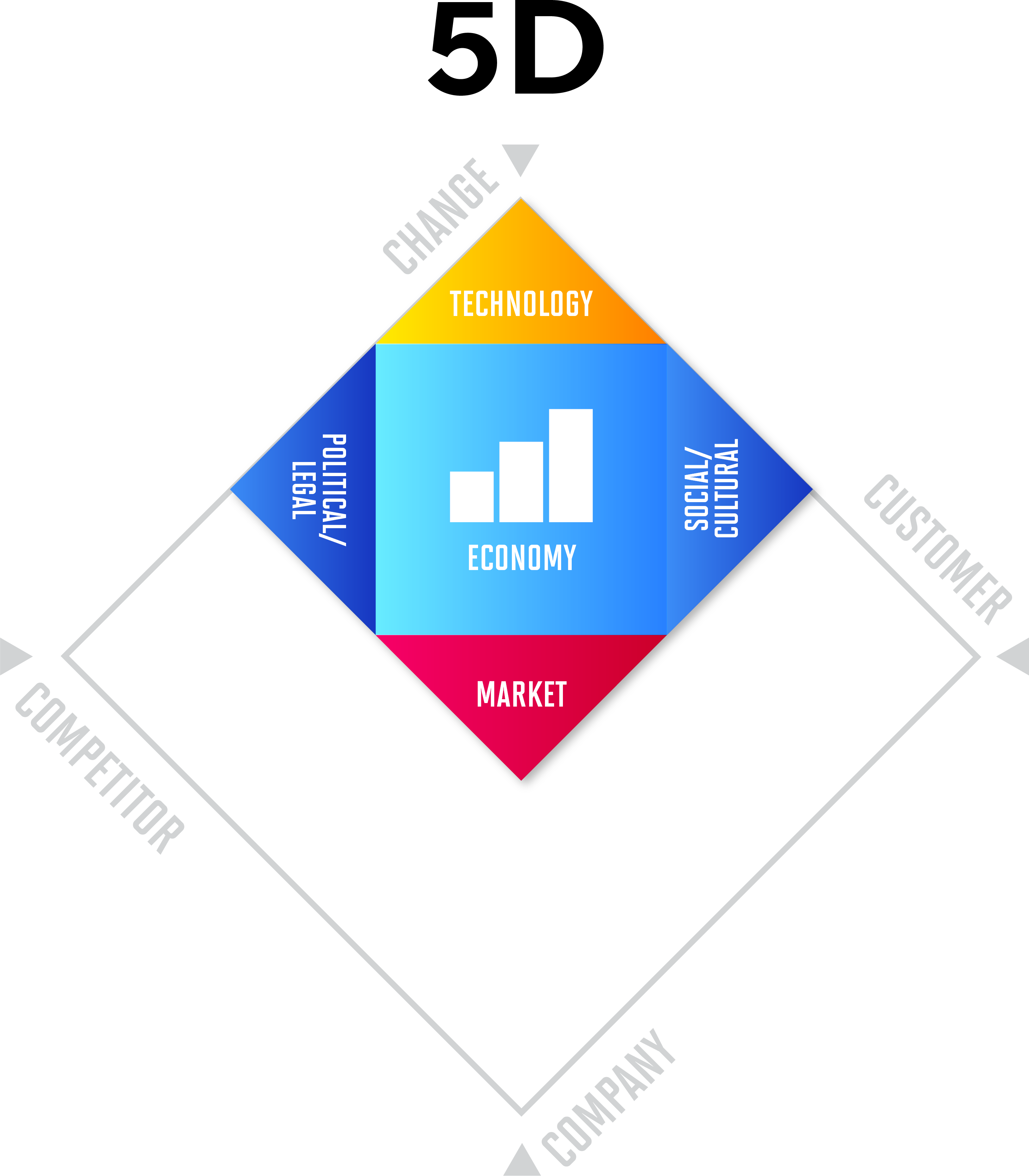5Driver+4CDiamond
5 Driver
To understand the changes occurring in the business environment, it is essential to identify the five drivers of change that act as key forces behind these transformations. These drivers are used by Philip Kotler and Hermawan Kartajaya to understand the interconnections among various factors, analyze business prospects, and develop future marketing strategies.
1. Technology
The first driver, Technology, is considered one of the most crucial. Technological advancements are a major force driving changes in how companies operate and innovate. In an increasingly connected world, businesses that fail to adapt quickly to technological innovations risk falling behind just like Blockbuster, which was unable to compete with Netflix during the rise of the streaming era. On the other hand, companies that effectively leverage technology—such as IKEA, which uses augmented reality (AR) to allow customers to virtually "try out" furniture can significantly enhance the customer experience and strengthen their market position.
2. Political/Legal
Political and regulatory factors also have a significant impact on businesses. Changes in government policies, environmental regulations, or political stability can create new opportunities or pose operational challenges. For example, government regulations that promote sustainability can encourage companies to adopt more environmentally friendly business practices. Conversely, political uncertainty or sudden regulatory changes can increase risks for businesses. Therefore, companies must be prepared to adapt to political and legal changes occurring in their markets.
3. Economy
The economic driver can significantly influence consumer purchasing power. Macroeconomic factors such as inflation, unemployment rates, consumer purchasing capacity, and global market conditions affect both consumer behavior and a company’s offering strategy. During economic downturns, consumers tend to reduce spending and become more price-sensitive, prompting companies to adjust pricing and product value accordingly. Conversely, when the economy improves, opportunities for expansion and new product launches increase. Therefore, businesses must continuously monitor economic indicators to anticipate market changes and adapt their strategies accordingly.
4. Social/cultural
The social/cultural driver is crucial in determining which customer segments a company should target. Social and cultural aspects influence consumer preferences and consumption patterns. Changes in societal values—such as growing awareness of health and sustainability—have increased consumer demand for environmentally friendly and ethically produced products. Companies must pay close attention to these shifts in order to respond effectively by offering products that align with current trends and market needs. For instance, the rising interest in organic food or sustainably produced clothing has become a trend that encourages companies to innovate and adjust their offerings accordingly.
5. Market
The market driver can influence product supply and demand due to varying market life cycles, structures, and trends. Changes in competitive structures or the emergence of new players can shift market dynamics and impact a company’s position. Therefore, businesses must continuously monitor industry developments and recognize shifts in market demand. For example, in the automotive industry, the growing trend toward electric vehicles requires car manufacturers to innovate in order to stay relevant. Understanding market conditions is essential for designing adaptive strategies and maintaining competitive advantage.
4C Diamond
The 4C Diamond Model was developed as a strategic framework that aligns both external and internal factors to analyze the ever-changing business landscape. This model includes four main elements: Change, Competitor, Customer, and Company. The first three elements (Change, Competitor, and Customer) represent external dynamics, while the last element, Company, reflects the internal strengths of the business. This approach enables companies to identify opportunities and threats while evaluating internal capabilities to formulate more relevant, adaptive, and competitive sustainable strategies.
Change
The five drivers of change serve as a foundation for understanding the transformations occurring in the business environment. Technology acts as the primary driver, influencing other aspects of change. This is followed by the political-legal, economic, and socio-cultural drivers as main drivers, which are themselves affected by the primary driver. Finally, the market driver serves as the ultimate driver, influenced by all other changes. These factors have not yet fully materialized but are expected to impact future business conditions. Philip Kotler and Hermawan Kartajaya use these drivers to understand the interconnections among various factors, analyze business prospects, and develop forward-looking marketing strategies.
Customer
After understanding external changes, the Customer element explains how companies should view their customers as the key drivers of innovation and business strategy. Customer needs and expectations are constantly evolving, influenced by their experiences, external communications such as advertising and recommendations from friends or social media, as well as economic and social conditions. Therefore, companies need to go beyond just demographic data and also explore customers’ psychographic and emotional factors. By understanding customer preferences and motivations, businesses can develop products and services that truly meet their expectations.
Competitor
In responding to external changes and customer needs, companies must also understand the Competitor element. This involves analyzing direct competitors, indirect competitors, and substitute products. There are three dimensions used to analyze competitors: general, aggressiveness, and capability. The general dimension refers to the number of competitors within the industry, including potential competitors, latent competitors, and those offering substitute products.The second dimension, aggressiveness, relates to the extent to which competitors implement creative and effective strategies.The third dimension, capability, concerns the competitors’ abilities, assessed by evaluating their financial situation, employee strength, and tangible assets—especially those related to technology.
Company
Finally, the Company element encourages businesses to objectively analyze themselves. The company itself becomes the value decider for what needs to be examined and assessed. Through this internal analysis, a company can determine its existing competencies, stretch possibilities, and risk attitude—essentially the real capabilities it possesses. This includes evaluating available resources, internal strengths, and readiness to face external challenges. With honest and thorough internal analysis, a company can formulate the right market positioning and ensure that the value offered to customers meets their expectations.
